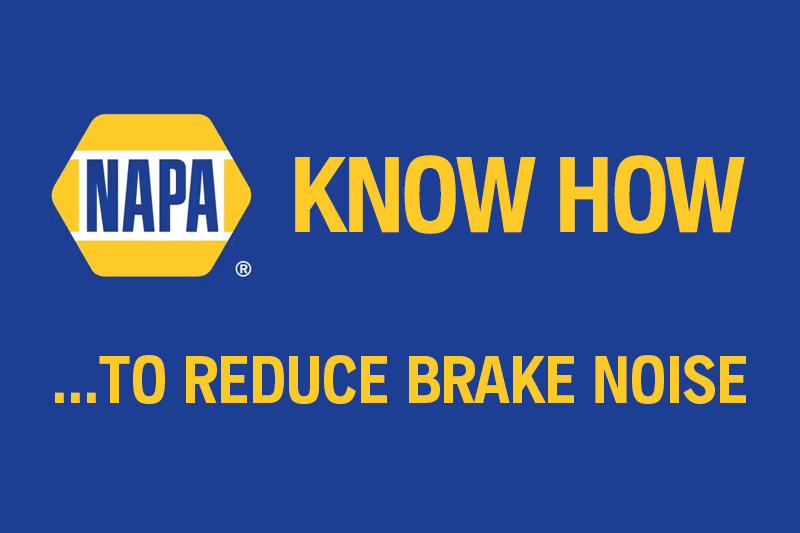
Preventing Noise, Vibration and Harshness (NVH)
24 Aug 2020
Category:
A high priority for those deciding to purchase a car is the cabin experience. Comfort, audio, technology and layout influence purchases and are areas where manufacturers can stand out. To reduce noise, vibration and harshness (NVH), manufacturers spend vast sums and research and development to address this issue at the earliest stages of development – including NVH generated by the braking system.
SPECIALIST BRAKE DEVELOPMENT
Vehicle manufacturers depend on brake suppliers to do preliminary testing on the individual components on the brake system during development. This includes ensuring the friction is sufficient for the application by testing the materials on a brake dynamometer, and suppressing noise without affecting pedal feel, fade resistance, wear or stopping power. Test track drivers then provide evaluations on how well the brakes perform (including noise levels) against their intended specification. When the design targets are reached, the braking system is approved and production begins.
To match OE specifications, the developers in NAPA follow the same process of the dynamometer, test track and road testing to develop aftermarket brake pads.
HOW QUIET ARE THE BRAKES?
The design, materials used and refining process all contribute to the quietness of most brakes, especially on luxury vehicles. However, during the selection process, performance requirements may be a deciding factor over noise suppression. For example, engineers may favour a particular design or friction material for its wear characteristics or high temperature fade resistance, over how quiet the brakes can be. Therefore, some newer models may have noisier brakes than the driver would prefer.
The majority of brake noise is caused by high frequency vibrations between the caliper, pads and brake disc. When a rotating brake disc rubs against a stationary pad, they glide smoothly and quietly. If there’s play between the caliper and the pads, the pads can vibrate as they come into contact with the brake disc, causing squealing sounds.
If the discs are heavily scored or lipped, replace them as their rough surfaces can also generate noise.
MINIMISING SOUND
NAPA products are developed to match OE quality and therefore incorporate the original manufacturer’s beneficial features, such as chamfered ends and/or adding openings to enhance the pad to reduce noise.
Shims may also be fitted to further dampen vibrations between the pad and caliper, acting like a cushion to dampen sound. Pads may also feature clips and springs to minimise movement between the caliper and pads to further reduce noise.
OLDER AND HIGH MILEAGE APPLICATIONS
Although NAPA brake component designs benefit from the features outlined above, they are usually fitted to vehicles that are several years old and/or have covered many thousand miles. Consequently, the surrounding components are often corroded, worn or missing and newly fitted pads may produce noise.
To prevent this, it is best practice to restore the braking system to as-new (or better than new) condition. This includes assessing the state of the calipers, discs and any other hardware to see what must be restored/replaced. When fitting NAPA products, ensure all corrosion is removed from the support points beforehand. For example, springs can lose their tension by up to 50%, causing the pads to move and generate noise. Springs should be replaced whenever the pads are changed.
LUBRICATION
Avoid using copper grease as this may effect ABS signals and encourage corrosion, preventing the pads from moving freely and causing noise.
CLEAN HUB SURFACES
Ensure hubs as thoroughly cleaned before new discs are fitted and use a DTI to check for lateral runout. Replacing the discs without doing either may be a waste of time and money; a DTI reading greater than 0.08mm and debris within the system can lead to brake judder.
OLD CAR, NEW BRAKING
If the brakes are noisy, harsh and vibrating, the driving experience can be ruined no matter how refined the suspension and engine components are. Vehicle manufacturers have gone to great lengths in their manufacturing processes to try to eliminate NVH and maintaining this level of noise on older vehicles is becoming simpler. Make sure you fit quality braking parts and accessories that are correct for the application, such as those from NAPA’s extensive range, whenever you service the braking system.
Chevrolet Spark Clutch Fitment Guide
A rattle generated from the clutch fork/release bearing area may be evident after a new...
Read MoreKia Sportage Clutch Fitment Guide
When installing a new clutch kit to the Kia Sportage CRDI (1.7, 2010-2015), you may...
Read MoreFuel Filter Fitment Guide - NFF2122
When replacing the fuel filter, it’s important to ensure correct fitment is followed. Keep the...
Read More